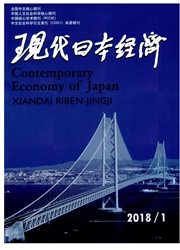

 中文摘要:
中文摘要:
日本于2002年商法修订后正式移植了独立董事制度,在公司治理模式上实行了可选择性的治理结构.本文在阐释日本独立董事产生背景的基础上,通过模型分析了日本独立董事制度移植方式的效率性。并考察了其实施状况.研究表明,尽管针对独立董事移植后在日本的公司治理环境中能否发挥作用尚存在着质疑,但是首先可以肯定的是这种移植方式是有效率的.得到的启示是,无论治理制度如何选择,应该遵循的总的原则就是,既要反映出明确的政策导向。又应该以自发性与自组织性占据主导地位.企业选择什么样的治理制度,应该由上市公司在试错过程中自身决定,监管部门信奉的监管理念应该是“看不见的手”.
 英文摘要:
英文摘要:
The amendment of Japanese Commercial Law formally transplants the independent director system, making it possible for the companies to choose the model of their corporate governance. This paper first reviews the institutional background of Japan's independent director system, and thus develops a model to analyze its efficiency. The implementing practice is furthermore examined. The research shows although there still exist doubts on the role of the independent director system in Japan, the efficiency of its introduction is cleared confirmed. As a general rule, the choice of governance type should accord with the policy direction, while ensuring initiatives and self-organization of the firms. It is also argued that the decision of governance type choice should be made by the enterprises themselves in a trial-and-error process, and the ideology held by the supervisor should be that of the "invisible hand".
 同期刊论文项目
同期刊论文项目
 同项目期刊论文
同项目期刊论文
 Building Core Competencies in a Turbulent Environment: An Exploratory Study of Firm Resources and Ca
Building Core Competencies in a Turbulent Environment: An Exploratory Study of Firm Resources and Ca Oversea Listing, Voluntary Governance and Corporate Performance--A Case Study Based on the ‘Sinopec’
Oversea Listing, Voluntary Governance and Corporate Performance--A Case Study Based on the ‘Sinopec’ A study of fairness judgments in China, Switzerland and Canada: Do culture, being a student, and gen
A study of fairness judgments in China, Switzerland and Canada: Do culture, being a student, and gen 期刊信息
期刊信息
